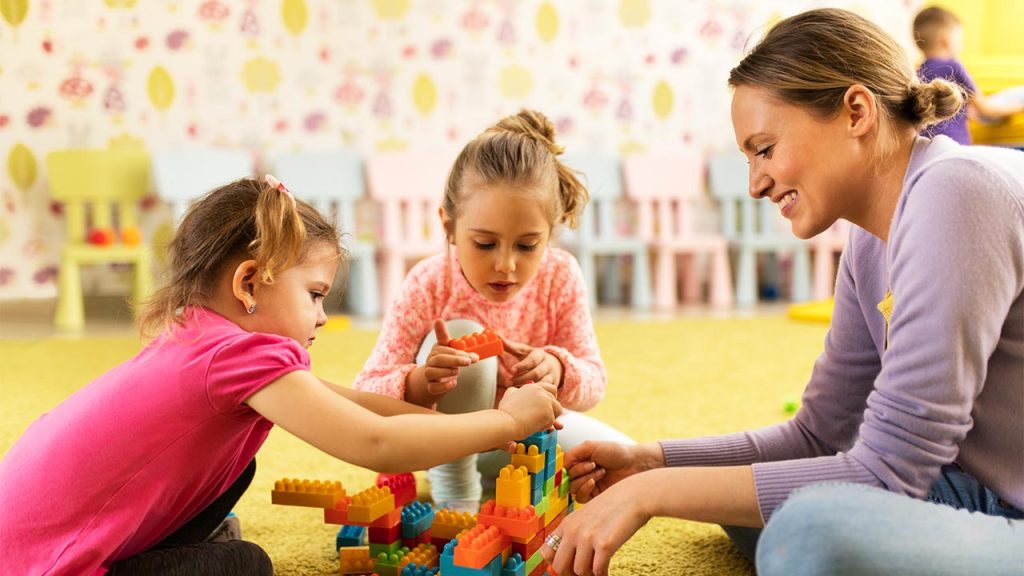Cognitive Development in Children is the process by which children acquire knowledge, learn to think critically, and develop problem-solving skills. From infancy to adolescence, the brain undergoes remarkable changes, shaping how children perceive, understand, and interact with the world.
But what are the key stages of cognitive growth? How do children develop memory, reasoning, and language skills? In this guide, we’ll explore the major theories of cognitive development, critical milestones, and ways to support children’s intellectual growth.
Understanding Cognitive Development in Children: What Is It?
:max_bytes(150000):strip_icc()/2795457-article-piagets-stages-of-cognitive-development-5a95c43aa9d4f900370bf112.png)
Cognitive Development in Children refers to how children learn, process information, and develop intellectual abilities. It includes:
- Memory & Problem-Solving – Understanding cause and effect, recognizing patterns, and making decisions.
- Language Development – Learning to communicate through speech, reading, and writing.
- Logical & Abstract Thinking – Moving from simple observations to complex reasoning and critical thinking.
📌 Fun Fact: A newborn’s brain doubles in size within the first year, forming thousands of new neural connections every second!
Jean Piaget’s Theory of Cognitive Development in Children
One of the most influential theories in developmental psychology comes from Jean Piaget (1896–1980), who proposed that children progress through four distinct cognitive stages.
A. Sensorimotor Stage (Birth – 2 Years) 🍼
- Infants explore the world through senses and movement.
- Object permanence develops—realizing objects exist even when out of sight.
- Early signs of problem-solving and cause-and-effect learning emerge.
📌 Example: A baby enjoys playing peekaboo because they are just beginning to understand that objects (or people) continue to exist even when hidden.
B. Preoperational Stage (2 – 7 Years) 🎨
- Children begin to use symbols and language to represent objects.
- Thinking is egocentric—they see the world from their own perspective.
- Struggle with conservation—understanding that quantity remains the same despite shape changes.
📌 Example: If you pour the same amount of water into a tall, narrow glass and a short, wide glass, a 4-year-old may insist that the taller glass holds more water.
C. Concrete Operational Stage (7 – 11 Years) 🏫
- Thinking becomes more logical and organized, but still concrete (tied to real-world examples).
- Children understand conservation, cause-and-effect, and classification.
- They start using basic reasoning but struggle with abstract ideas.
📌 Example: A child at this stage can sort objects by size, number, or shape and understand that a broken cookie is still the same amount as an unbroken one.
D. Formal Operational Stage (12+ Years) 🔬
- Abstract thinking develops—children can reason about hypothetical situations.
- They develop critical thinking, problem-solving, and moral reasoning.
- Teens can think about the future, complex ideas, and social issues.
📌 Example: A teenager can debate ethical dilemmas, solve algebraic equations, and plan for their career goals.
Lev Vygotsky’s Sociocultural Theory: The Role of Social Interaction
While Piaget emphasized stages of individual development, Lev Vygotsky (1896–1934) highlighted the importance of social interactions and culture in cognitive growth.
- Zone of Proximal Development (ZPD): The gap between what a child can do alone and what they can achieve with guidance from others.
- Scaffolding: Support from caregivers or teachers helps children master new skills just beyond their current ability.
- Language & Learning: Talking through problems enhances cognitive growth.
📌 Example: A child learning to tie their shoes benefits from an adult showing them step-by-step before mastering it independently.
Key Cognitive Milestones in Cognitive Development in Children
Infancy (0–12 Months)
- Recognizes faces, sounds, and voices.
- Begins to imitate gestures and sounds.
- Develops object permanence (6–8 months).
📌 Pro Tip: Peekaboo games help babies develop memory and object permanence.
Toddlerhood (1–3 Years)
- Expands vocabulary rapidly (by 2 years, a child knows about 200 words).
- Begins simple problem-solving (e.g., stacking blocks to reach a toy).
- Engages in pretend play (e.g., pretending a box is a car).
📌 Fun Fact: Toddlers go through a “why?” phase as they try to make sense of their world!
Preschool & Early Childhood (3–6 Years)
- Improves language skills and can tell simple stories.
- Understands basic counting and shapes.
- Begins to recognize cause and effect.
📌 Example: A preschooler learns that mixing blue and yellow paint makes green.
Middle Childhood (6–12 Years)
- Develops logical thinking and understands conservation.
- Begins to read fluently and solve math problems.
- Learns strategy-based games like chess or puzzles.
📌 Pro Tip: Playing board games and puzzles helps improve critical thinking and problem-solving.
Adolescence (12–18 Years)
- Thinks in abstract and hypothetical ways.
- Understands moral and ethical dilemmas.
- Forms personal identity and independent opinions.
📌 Example: A teenager debates climate change policies or philosophical questions.
How to Support
Cognitive Development in Children
- Encourage Play-Based Learning – Games, puzzles, and role-playing enhance problem-solving.
- Read Together Daily – Expands vocabulary and comprehension skills.
- Ask Open-Ended Questions – Stimulates curiosity and reasoning (e.g., “What do you think will happen next in the story?”).
- Provide Hands-On Experiences – Science experiments, arts, and building activities boost learning.
- Limit Screen Time & Encourage Social Interaction – Face-to-face conversations and outdoor play support brain development.
📌 Pro Tip: Let kids explore, experiment, and make mistakes—it’s part of the learning process!
Conclusion
Cognitive Development in Children is a lifelong process, but childhood is where the foundation for critical thinking, creativity, and problem-solving is built. Whether through play, education, or social interactions, fostering cognitive growth helps children reach their full intellectual potential.
🔥 So, whether you’re a parent, teacher, or caregiver, remember—every question, story, and hands-on experience shapes a child’s future thinking! 🧠📚✨
Looking for inspiration for your next web project? Check out CSS Mayo for a curated collection of creative CSS snippets and design ideas.

